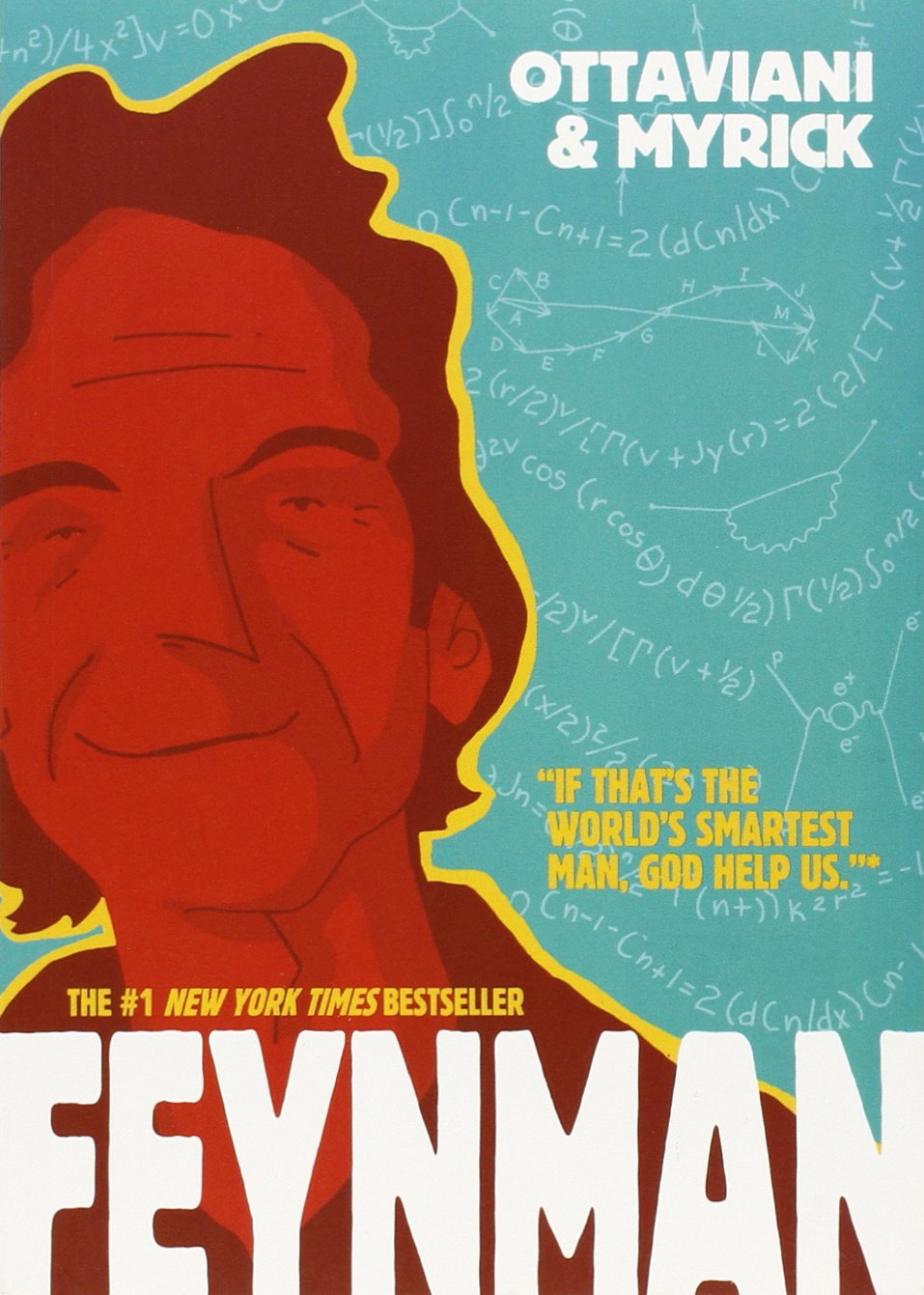Physics and Computing
in science and animation
We shall take a look at physics, and how it is relevant in computer science.
What is Physics
Physics is the study of nature.
It is about curiosity and logic: how nature works.
The logic leads to the math behind physics, and the curious physicists find out the laws of nature.
The scope of physics is astounding:
- from the universe as we know,
- to the stars we see through telescopes,
- to the beautiful rainbow across the sky,
- to the snowflakes under a microscope,
- to the molecules and atoms of chemistry,
- to the fundamental particles we can detect.
All these are parts of nature, and all of them are described by math equations【1】.
Click to enlarge (click again to close)

Physics and Art
There are two ways to appreciate the beauty of nature: science and art.
Do you know how to make a rainbow【5】? Art forms can be produced by sound waves, as well as ferrofluids【6】. There is even geometry from soap bubbles【7】.
The smile of Mona Lisa【8】is a combination of art, science, optics, and illusion. It was the work of Leonardo da Vinci, an artist and an engineer who also studied human anatomy.
The art of paper folding is called origami. Robert Lang, a NASA physicist, turned into an origami artist making real-world applications of origami to engineering problems【9】【10】. His complex and elegant designs make use of math and physics.
Physics and Animation
There is another way to put art and science together: computer animation.
Animation movies have their own worlds. For these worlds to be realistic, they mimic our natural world, follow the same laws. Having a good understanding of physics can help to place the characters and special effects in a consistent and believable world.
These animation techniques are highly developed in studios like Pixar【11】and Dreamworks【14】,
with programmers and animators working together to refine their software systems.
Think about how to draw and paint the following:
- mesmerizing lights and shades through water in Finding Nemo【12】,
- graceful movement and flowing hair of Merida in Brave【13】,
- swirling flights of Toothless in How to Train Your Dragon【15】,
- Melman the giraffe balancing on tightrope in Madagascar【16】.
All these frame sequences are computed, using knowledge in physics!
Click to enlarge (click again to close)

Epilog
You probably have seen "Kubo and The Two Strings"【17】, a stop-motion animation movie. Its setting is traditional Japan, with origami, floating lanterns, legends and music.
Each frame of the movie is painstakingly photographed through puppets and models, statically. The motion is an illusion in our brains produced by the fast-changing frames.
The scale models for the various scenes and techniques of photography take a lot of skills in physics and engineering.
Links
- 【1】Mathematics is the queen of Sciences【53:51】

About math and physics, on PBS network's NOVA program series, 2015.
- 【2】Joan Feynman: Being Feynman's Curious Sister【17:46】

A talk at Feynman 100: a celebration of Richard Feynman's life and legacy.
- 【3】The Sun is Always Shining on Joan Feynman (by Laura Faye Tenenbaum)
https://www.jpl.nasa.gov/blog/2015/5/the-sun-is-always-shining-on-joan-feynman
“The whole point of science is to understand the mysteries you see around you,” she said.
- Joan Feynman: From auroras to anthropology (by Christopher Riley)
https://findingada.com/shop/a-passion-for-science-stories-of-discovery-and-invention/joan-feynman-from-auroras-to-anthropology/
A very detailed account of Joan Feynman’s career.
- 【4】Feynman: A Graphic Novel (Jim Ottaviani, 2011. 283 pages.)
https://jhlchan.bitbucket.io/feynman/Feynman.GN.pdf
The graphic novel is composed of short stories about Richard Feynman. It touches on his physics: from elementary to Nobel-prize level.
- 【5】Five Ways to make a Rainbow. Science Experiments You Can Do At Home【2:27】

From Kitchen Science Lab, presented by Dasha, mommy to Artem and Veronica.
- 【6】When science meets art | Fabian Oefner | TEDxWarwick【10:24】

Fabian Oefner is a talented photographer based in Switzerland whose work marries visual aesthetics and science.
- 【7】Integration of Art and Science | Yoko Shimizu | TEDxTokyo【8:05】

Yoko Shimizu is a contemporary artist and biochemistry researcher.
- 【8】The Science Behind Mona Lisa’s Smile (by Walter Isaacson)
https://www.theatlantic.com/magazine/archive/2017/11/leonardo-da-vinci-mona-lisa-smile/540636/
How Leonardo da Vinci engineered the world’s most famous painting, with the following YouTube video.
- How Leonardo Da Vinci 'Augmented Reality' — 500 Years Ago【3:00】

The painter made the Mona Lisa interactive using innovative techniques and the physiology of human eye.
- 【9】See a NASA Physicist's Incredible Origami【3:01】

By Robert Lang, a physicist and an origami artist.
- 【10】The math and magic of origami | Robert Lang【18:04】

Using math and engineering principles to fold mind-blowingly intricate designs, beautiful and useful.
- 11 Levels of Origami: Easy to Complex | WIRED【16:11】

From a simple, traditional cicada to an extremely intricate one.
- 【11】Museum of Science: The Science Behind Pixar
https://sciencebehindpixar.org
Explore the Exhibit | For Educators | For Researcher. Many resource links.
- Inside Pixar: Behind the Doors of Imagination | ENDEVR Documentary【20:43】

John Lasseter notes that "art challenges technology, and technology challenges art."
- 【12】The magic ingredient that brings Pixar movies to life | Danielle Feinberg【12:05】

Danielle Feinberg, Pixar's director of photography, talks about how Pixar interweaves art and science to create fantastic worlds.
- 【13】Computer Simulation (Pixar in a Box)【2:07】

Hayley Iben at Pixar explains how to simulate Merida's hair in Brave by computer.
- A Rare Look Inside Pixar Studios | The New York Times【6:09】

Melena Ryzik gets a rare behind-the-scenes look at the Pixar Studios complex in California.
- On The Verge: inside Pixar Animation Studios with Monsters University【7:46】

Bryan Bishop visits Pixar and talks to some of the brilliant people behind Monsters University.
- 【14】CGI Dreamworks Animation Studio Pipeline | CGMeetup【15:43】

Dreamworks Education presents: Pipeline Script to Screen.
- Behind the Scenes of DreamWorks Animation【3:12】

Jeffrey Katzenberg, founder and CEO of DreamWorks Animation, talks about his studio.
- 【15】Physics of Animation - Science Nation【2:32】

Alejandro Garcia has developed a course in physics for animators and artists. He is also spending a semester as a consultant for animators at DreamWorks Studio in northern California (before 2015).
- 【16】Lecture Series - The Physics of Animation【1:01:32】

Professor Alejandro Garcia explains the physics of tightrope balancing (timestamp 10:30).
- Intel® Technology Plays Key Role in How to Train Your Dragon 2【2:16】

DreamWork animators team up with Intel to put a combination of dreams artistry and technology to bring the delight in DreamWorks movies.
- Dreamworks Studio Tour【5:35】

Ricardo Azevedo visits the DreamWorks Animation Studios in southern California (after 2015).
- 【17】Kubo and the Two Strings (2016) in Google Drive:
https://drive.google.com/drive/folders/1G05s-SatzAVjnC33vfI0Xxlmo4c1qjK1
Download the movie (mp4, 752MB, duration: 1:41:36) and the subtitle (srt). Double click to play.
Most video players can handle mp4 files. You may need to figure out how to configure your video player to use the subtitle file.
If your player runs into problems, install the free VLC from App Store or Google Play or Microsoft Store.
- Kubo and the Two Strings (2016) - end credits song【3:24】

This famous classic of George Harrison, While My Guitar Gently Weeps, is sung by Regina Spektor, and played using oriental instruments, including the samisen (三味線), a traditional Japanese instrument with three strings.






















